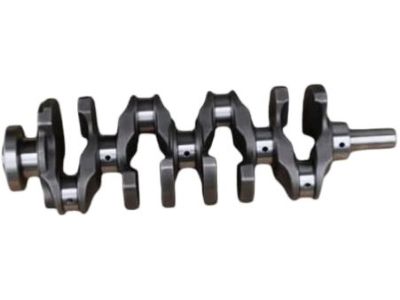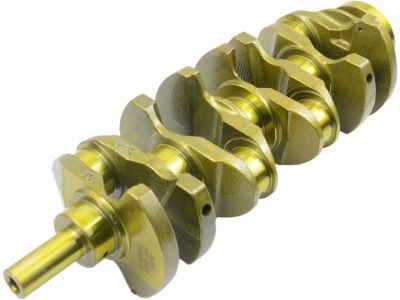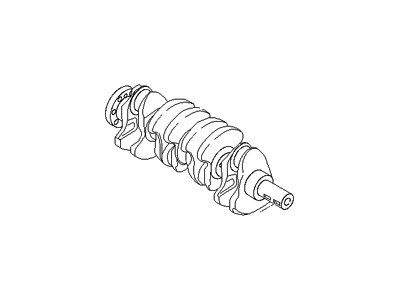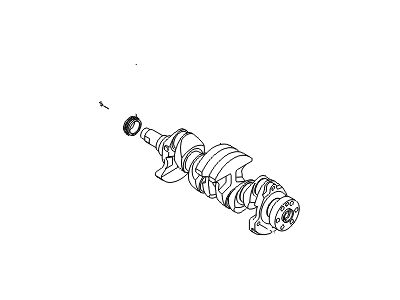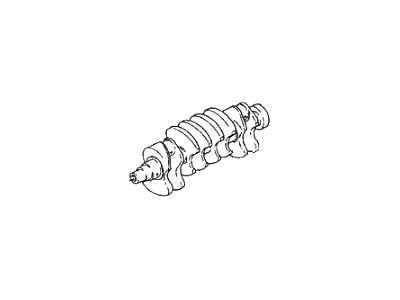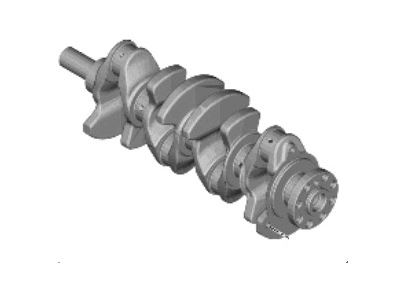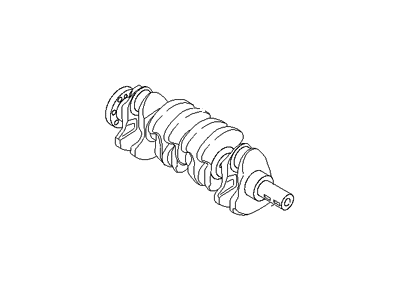×
- Hello
- Login or Register
- Quick Links
- Live Chat
- Track Order
- Parts Availability
- RMA
- Help Center
- Contact Us
- Shop for
- Hyundai Parts
- Hyundai Accessories


My Garage
My Account
Cart
Genuine Hyundai Sonata Crankshaft
Crank Shaft- Select Vehicle by Model
- Select Vehicle by VIN
Select Vehicle by Model
orMake
Model
Year
Select Vehicle by VIN
For the most accurate results, select vehicle by your VIN (Vehicle Identification Number).
26 Crankshafts found

Hyundai Sonata Crankshaft
Part Number: 23111-2G200$934.56 MSRP: $1336.31You Save: $401.75 (31%)Ships in 1-3 Business DaysHyundai Sonata Crankshaft
Part Number: 23111-2G230$934.56 MSRP: $1336.31You Save: $401.75 (31%)Ships in 1-3 Business DaysHyundai Sonata Crankshaft Assembly
Part Number: 23110-2B710$1025.18 MSRP: $1465.89You Save: $440.71 (31%)Ships in 1-3 Business DaysHyundai Sonata Crankshaft
Part Number: 23111-2G430$1076.27 MSRP: $1538.94You Save: $462.67 (31%)Ships in 1-3 Business DaysHyundai Sonata Crankshaft Assembly
Part Number: 23110-3C151$1162.28 MSRP: $1661.92You Save: $499.64 (31%)Ships in 1-3 Business DaysHyundai Sonata Crankshaft
Part Number: 23111-2M002$666.45 MSRP: $944.56You Save: $278.11 (30%)Ships in 1-3 Business DaysHyundai Sonata Crankshaft Assembly
Part Number: 23110-38230$680.91 MSRP: $973.61You Save: $292.70 (31%)Ships in 1-3 Business DaysHyundai Sonata Crankshaft Assembly
Part Number: 23110-32600$798.13 MSRP: $1141.23You Save: $343.10 (31%)Ships in 1-3 Business DaysHyundai Sonata
Part Number: 23111-2S010$1076.27 MSRP: $1538.94You Save: $462.67 (31%)Ships in 1-3 Business DaysHyundai Sonata Crankshaft Assembly
Part Number: 23110-33100$679.55 MSRP: $963.13You Save: $283.58 (30%)Ships in 1-3 Business DaysHyundai Sonata Crankshaft Assembly
Part Number: 23110-38200$680.91 MSRP: $973.61You Save: $292.70 (31%)Ships in 1-3 Business DaysHyundai Sonata Crankshaft
Part Number: 23111-25200$860.91 MSRP: $1231.00You Save: $370.09 (31%)Ships in 1-3 Business DaysHyundai Sonata Crankshaft
Part Number: 23111-25210$860.91 MSRP: $1231.00You Save: $370.09 (31%)Ships in 1-3 Business DaysHyundai Sonata Crankshaft
Part Number: 23111-25220$860.91 MSRP: $1231.00You Save: $370.09 (31%)Ships in 1-3 Business DaysHyundai Sonata Crankshaft Assembly
Part Number: 23110-37101$913.71 MSRP: $1306.50You Save: $392.79 (31%)Ships in 1-3 Business DaysHyundai Sonata Crankshaft
Part Number: 23111-35020$1026.03 MSRP: $1467.10You Save: $441.07 (31%)Ships in 1-3 Business DaysHyundai Sonata Crankshaft Assembly
Part Number: 605N6-2BU00$1074.39 MSRP: $1536.24You Save: $461.85 (31%)Ships in 1-3 Business DaysHyundai Sonata Crankshaft
Part Number: 606N6-2MU00$1660.45 MSRP: $2374.24You Save: $713.79 (31%)Ships in 1-3 Business Days
| Page 1 of 2 |Next >
1-20 of 26 Results
Hyundai Sonata Crankshaft
If you are looking for affordable high-quality OEM Hyundai Sonata Crankshaft, then you have come to the prime place. Our website provides a large amount of genuine Hyundai Sonata Crankshaft at unbeatable prices. All our parts come backed with the manufacturer's warranty.
Hyundai Sonata Crankshaft Parts Questions & Experts Answers
- Q: How is the crankshaft removed and installed on Hyundai Sonata?A:The crankshaft can be removed only in case when engine is disassembled and pulled out of the car assuming that such components as flywheel, crankshaft pulley, timing belt or chain, oil pan, oil pump body, oil filter and Piston/connecting rod assemblies were already removed. Before taking out the crankshaft, it is recommended that the crankshaft end play should be adjusted using a dial gauge placed on the crankshaft. Loosen the centre-main bearing cap and insert the indicator pin between the crankshaft journal and block, zero the indicator, apply forward force on the crankshaft to measure the endplay, which is usually between 0.003 to 0.010 inch. If a dial indicator is not available, then to check for clearance feeler gauges can be used. Turn the main bearing cap bolts in increments and gently shake the caps to remove them; slowly raise the crankshaft, it is recommended to do it in pairs. Before, during and after installation it is recommended that the engine block and crankshaft must be cleaned and checked. Align the block in such a way that the bottom is up, then take off the main bearing caps and clean the bearing surfaces. New upper main bearing inserts have to be installed such that oil holes coincide; lower inserts have to be placed in the caps. Use of Plastigage to determine the oil clearance by comparing the crushed width of the Plastigage against the scale. If clearance is not within specification, then check cleanliness and go for another size of the bearing if need be. On some engines wiping any Plastigage residue off, apply a thin coat of oil to the bearing surfaces before replacing the crankshaft and the main bearing caps. Place new bearings on the crankshaft and then tighten the bolts in the sequence to the torque recommended any pushing on the crankshaft must be done until it is well seated. Last but not least, double check the crankshaft end play and spin the crankshaft by hand, if there is any tightness feel free to fix it before replacing the rear main oil seal.
Related Hyundai Sonata Parts
Browse by Year
2023 Crankshaft 2022 Crankshaft 2021 Crankshaft 2020 Crankshaft 2019 Crankshaft 2018 Crankshaft 2017 Crankshaft 2016 Crankshaft 2015 Crankshaft 2014 Crankshaft 2013 Crankshaft 2012 Crankshaft 2011 Crankshaft 2010 Crankshaft 2009 Crankshaft 2008 Crankshaft 2007 Crankshaft 2006 Crankshaft 2005 Crankshaft 2004 Crankshaft 2003 Crankshaft 2002 Crankshaft 2001 Crankshaft 2000 Crankshaft 1999 Crankshaft 1998 Crankshaft 1997 Crankshaft 1996 Crankshaft 1995 Crankshaft 1994 Crankshaft 1993 Crankshaft 1992 Crankshaft 1991 Crankshaft 1990 Crankshaft 1989 Crankshaft 1988 Crankshaft
